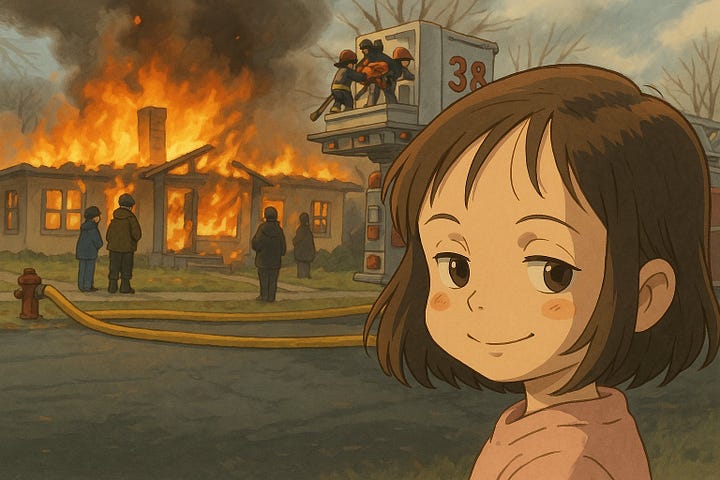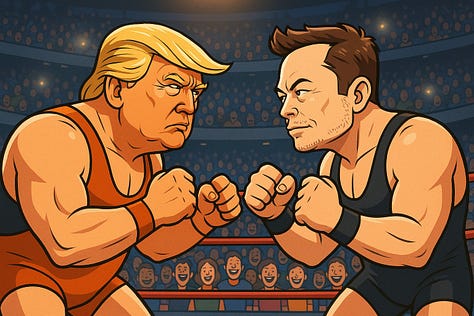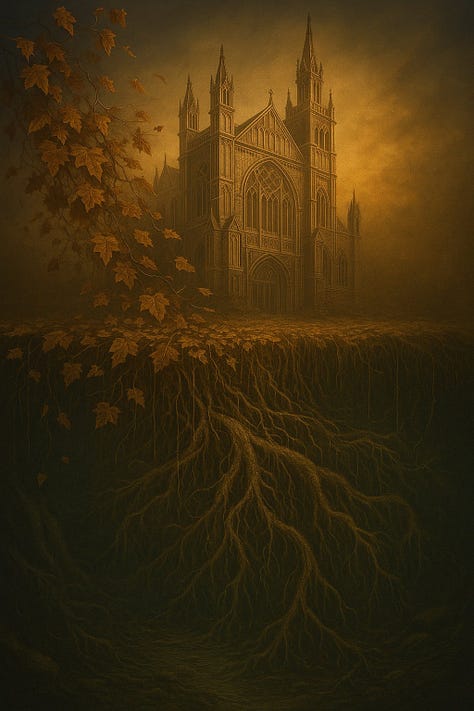Have you noticed it? The imagery in social media feeds is becoming increasingly bland. The culprit? AI “art.” Despite the promises of AI being able to produce art in any and every style imaginable, most of the AI-generated pictures that litter social media these days are either cutesy Studio Ghibli-style anime or dark, gloomy realism. The result is feeds full of images reaching a level of genericism that corporate stock photography could only dream of achieving.
[Just here for the list of free art sources? Skip on down.]
It turns out that being able to generate whatever image one’s heart desires doesn’t actually confer creativity upon someone. When given this option, so many people have defaulted to the most generic subjects in the most generic styles they can think of, or recreating images that already exist. People have even begun recreating established memes with AI.


Why? It adds nothing and often detracts from the eccentric character of the original.
And then there is the Great Yellowing: AI images are taking on a yellow tint. This phenomenon is unaffectionately referred to as the “Piss Filter.”



Even some photo-realistic AI images are starting to take on a yellow tinge.
There are differing theories as to why this may be happening. Some think it is because AI trained on old, unrestored art that has a distinct yellow tint, due either to the paper aging, paint pigments degrading, or oil paintings hanging for decades or even centuries in smoke-filled rooms. Others note that some popular media has intentionally used the Piss Filter. General examples of this include many video games from the early 2000s and shows and movies frequently using yellow color grading for scenes taking place in places like Mexico or the Middle East. Maybe AI is learning from them.
However, this yellowing wasn’t always an issue; it seems to have started around the time when the Studio Ghibli-style craze took hold in the spring of 2025; before that, there was no noticeable trend of yellowing. While the above examples of yellowing in real-life art may contribute to AI art’s new tint, it seems as though there may also be an element of inbreeding at play here, as AI starts to be fed its own images.
Regardless of the reason for the persistent Piss Filter, and regardless of whether or not this will be fixed in future AI models, this phenomenon has only added to the blandness of new imagery on the internet. This is especially prevalent on Twitter, with Grok being built right into the platform, making it quick and easy for users to generate images for their posts; however, it can be seen on all social media platforms. It’s even making its way into video thumbnails on YouTube and Rumble. AI-generated art is also becoming increasingly abundant on stock image sites.
As you can probably tell, my feelings towards AI art are generally antagonistic. I think it is making, at the very least, the online world (though it is sure to spill out into the real world, probably sooner rather than later) visually bland, uninteresting, ugly, and (of course) yellow. Yet, despite my personal feelings towards it, I can see the draw to AI-generated art; especially to content creators in need of visual assets to enhance their own work. And even though I think AI models training on copyrighted works is, at best, morally questionable, I still would prefer someone generate an image with AI rather than steal a living artist’s work.
That being said, the choice between stealing someone else’s work or generating an image with AI is a false binary. For starters, people could (gasp) pay to license art for their content. Of course, as someone who is, shall we say, monetarily challenged, I do understand that paying for art licenses isn’t always in the budget. The good news is that there are millions of images available that are free to use, without any moral or legal issues and that are vastly more interesting than most of the AI images out there. You just need to know where to look.
The List
I have compiled an extensive (yet still incomplete) list of websites that feature free-to-use images. Some of these sites are fully free-to-use, while others have a mix of free and paid content. Some feature works in the Public Domain, which typically have few if any restrictions on their use. Others feature works that have been placed under a Creative Commons license, which, depending on the exact variation of that license, may have some restrictions on how they can be used. And still others contain a mix of Public Domain, Creative Commons (CC), and fully copyrighted work. Always be sure to look at the website’s copyright info pages, the status of individual works, and select the appropriate advanced search options, when applicable, before downloading and using an image. Some of these sites do also have AI-generated images, so be sure to read descriptions if you are trying to avoid those.
I have divided this list into several categories:
Many of these categories will crossover. Art museums often contain images of historical significance. Scientific illustrations also have artistic value. Stock photography sites sometimes feature works from art museums. These categories are just to get you started, not to exist as hard and fast rules.
Compilation Collections
If you are looking for one-stop shops, these are the sites to hit. They compile images from various museums, libraries, and other sources, sometimes featuring the entire collections and other times simply the highlights of larger collections.
Stock Photography and Illustrations
These sites feature more contemporary work, usually uploaded by individual artists, though some may be curated collections. Most images available will be under a Creative Commons license (though there are some Public Domain works mixed in as well). In some cases (such as with Flickr), there may be works that are not available for licensing at all, so be sure to double-check before downloading.
Flickr (the search defaults to “any license,” so be sure to select the appropriate license from the drop-down menu)
Art Museums and Galleries:
More and more, art museums are digitizing their collections and making them available for download to the public. Most of these museums are American, but I have found a few European ones with excellent collections as well. That being said, Public Domain laws vary from country to country, so usage may vary as well. Please note: while the vast majority of these collections will be in the Public Domain, art museums often have contemporary collections with works still under copyright.
Scientific and Historic Collections
These collections predominantly feature works of scientific or historical interest. Most works will be in the Public Domain, though there are always exceptions.
Government Works
Government works are a newer source of free images, to me. As of right now, I’ve only looked into US government works, but if I learn of other governments offering free images, I may add them at a later date. In the meantime, be sure to read up on the usage guidelines for US government works here. Please note, some collections listed here use CC licenses. This list is incomplete and I will add to it as I learn of more sources.
I hope this list of resources is useful to you. As I learn of more sources, I will add them to the list. If you know of any websites for free images, please feel to let me know in the comments and I will add them to the list!





